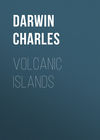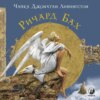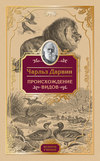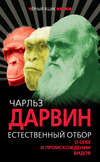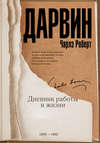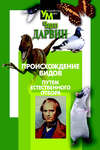Читать книгу: «Volcanic Islands», страница 2
CHAPTER I. – ST. JAGO, IN THE CAPE DE VERDE ARCHIPELAGO
Rocks of the lowest series.
A calcareous sedimentary deposit, with recent shells, altered by the contact of superincumbent lava, its horizontality and extent.
Subsequent volcanic eruptions, associated with calcareous matter in an earthy and fibrous form, and often enclosed within the separate cells of the scoriae.
Ancient and obliterated orifices of eruption of small size.
Difficulty of tracing over a bare plain recent streams of lava.
Inland hills of more ancient volcanic rock.
Decomposed olivine in large masses.
Feldspathic rocks beneath the upper crystalline basaltic strata.
Uniform structure and form of the more ancient volcanic hills.
Form of the valleys near the coast.
Conglomerate now forming on the sea beach.
(FIGURE 1: MAP 1: PART OF ST. JAGO, ONE OF THE CAPE DE VERDE ISLANDS.)
The island of St. Jago extends in a N.N.W. and S.S.E. direction, thirty miles in length by about twelve in breadth. My observations, made during two visits, were confined to the southern portion within the distance of a few leagues from Porto Praya. The country, viewed from the sea, presents a varied outline: smooth conical hills of a reddish colour (like Red Hill in Figure 1 (Map 1). (The outline of the coast, the position of the villages, streamlets, and of most of the hills in this woodcut, are copied from the chart made on board H.M.S. "Leven." The square-topped hills (A, B, C, etc.) are put in merely by eye, to illustrate my description.)), and others less regular, flat-topped, and of a blackish colour (like A, B, C,) rise from successive, step-formed plains of lava. At a distance, a chain of mountains, many thousand feet in height, traverses the interior of the island. There is no active volcano in St. Jago, and only one in the group, namely at Fogo. The island since being inhabited has not suffered from destructive earthquakes.
The lowest rocks exposed on the coast near Porto Praya, are highly crystalline and compact; they appear to be of ancient, submarine, volcanic origin; they are unconformably covered by a thin, irregular, calcareous deposit, abounding with shells of a late tertiary period; and this again is capped by a wide sheet of basaltic lava, which has flowed in successive streams from the interior of the island, between the square-topped hills marked A, B, C, etc. Still more recent streams of lava have been erupted from the scattered cones, such as Red and Signal Post Hills. The upper strata of the square-topped hills are intimately related in mineralogical composition, and in other respects, with the lowest series of the coast- rocks, with which they seem to be continuous.
MINERALOGICAL DESCRIPTION OF THE ROCKS OF THE LOWEST SERIES.
These rocks possess an extremely varying character; they consist of black, brown, and grey, compact, basaltic bases, with numerous crystals of augite, hornblende, olivine, mica, and sometimes glassy feldspar. A common variety is almost entirely composed of crystals of augite with olivine. Mica, it is known, seldom occurs where augite abounds; nor probably does the present case offer a real exception, for the mica (at least in my best characterised specimen, in which one nodule of this mineral is nearly half an inch in length) is as perfectly rounded as a pebble in a conglomerate, and evidently has not been crystallised in the base, in which it is now enclosed, but has proceeded from the fusion of some pre-existing rock. These compact lavas alternate with tuffs, amygdaloids, and wacke, and in some places with coarse conglomerate. Some of the argillaceous wackes are of a dark green colour, others, pale yellowish-green, and others nearly white; I was surprised to find that some of the latter varieties, even where whitest, fused into a jet black enamel, whilst some of the green varieties afforded only a pale gray bead. Numerous dikes, consisting chiefly of highly compact augitic rocks, and of gray amygdaloidal varieties, intersect the strata, which have in several places been dislocated with considerable violence, and thrown into highly inclined positions. One line of disturbance crosses the northern end of Quail Island (an islet in the Bay of Porto Praya), and can be followed to the mainland. These disturbances took place before the deposition of the recent sedimentary bed; and the surface, also, had previously been denuded to a great extent, as is shown by many truncated dikes.
DESCRIPTION OF THE CALCAREOUS DEPOSIT OVERLYING THE FOREGOING VOLCANIC ROCKS.
This stratum is very conspicuous from its white colour, and from the extreme regularity with which it ranges in a horizontal line for some miles along the coast. Its average height above the sea, measured from the upper line of junction with the superincumbent basaltic lava, is about sixty feet; and its thickness, although varying much from the inequalities of the underlying formation, may be estimated at about twenty feet. It consists of quite white calcareous matter, partly composed of organic debris, and partly of a substance which may be aptly compared in appearance with mortar. Fragments of rock and pebbles are scattered throughout this bed, often forming, especially in the lower part, a conglomerate. Many of the fragments of rock are whitewashed with a thin coating of calcareous matter. At Quail Island, the calcareous deposit is replaced in its lowest part by a soft, brown, earthy tuff, full of Turritellae; this is covered by a bed of pebbles, passing into sandstone, and mixed with fragments of echini, claws of crabs, and shells; the oyster-shells still adhering to the rock on which they grew. Numerous white balls appearing like pisolitic concretions, from the size of a walnut to that of an apple, are embedded in this deposit; they usually have a small pebble in their centres. Although so like concretions, a close examination convinced me that they were Nulliporae, retaining their proper forms, but with their surfaces slightly abraded: these bodies (plants as they are now generally considered to be) exhibit under a microscope of ordinary power, no traces of organisation in their internal structure. Mr. George R. Sowerby has been so good as to examine the shells which I collected: there are fourteen species in a sufficiently perfect condition for their characters to be made out with some degree of certainty, and four which can be referred only to their genera. Of the fourteen shells, of which a list is given in the Appendix, eleven are recent species; one, though undescribed, is perhaps identical with a species which I found living in the harbour of Porto Praya; the two remaining species are unknown, and have been described by Mr. Sowerby. Until the shells of this Archipelago and of the neighbouring coasts are better known, it would be rash to assert that even these two latter shells are extinct. The number of species which certainly belong to existing kinds, although few in number, are sufficient to show that the deposit belongs to a late tertiary period. From its mineralogical character, from the number and size of the embedded fragments, and from the abundance of Patellae, and other littoral shells, it is evident that the whole was accumulated in a shallow sea, near an ancient coast-line.
EFFECTS PRODUCED BY THE FLOWING OF THE SUPERINCUMBENT BASALTIC LAVA OVER THE CALCAREOUS DEPOSIT.
These effects are very curious. The calcareous matter is altered to the depth of about a foot beneath the line of junction; and a most perfect gradation can be traced, from loosely aggregated, small, particles of shells, corallines, and Nulliporae, into a rock, in which not a trace of mechanical origin can be discovered, even with a microscope. Where the metamorphic change has been greatest, two varieties occur. The first is a hard, compact, white, fine-grained rock, striped with a few parallel lines of black volcanic particles, and resembling a sandstone, but which, upon close examination, is seen to be crystallised throughout, with the cleavages so perfect that they can be readily measured by the reflecting goniometer. In specimens, where the change has been less complete, when moistened and examined under a strong lens, the most interesting gradation can be traced, some of the rounded particles retaining their proper forms, and others insensibly melting into the granulo-crystalline paste. The weathered surface of this stone, as is so frequently the case with ordinary limestones, assumes a brick-red colour.
The second metamorphosed variety is likewise a hard rock, but without any crystalline structure. It consists of a white, opaque, compact, calcareous stone, thickly mottled with rounded, though regular, spots of a soft, earthy, ochraceous substance. This earthy matter is of a pale yellowish- brown colour, and appears to be a mixture of carbonate of lime with iron; it effervesces with acids, is infusible, but blackens under the blowpipe, and becomes magnetic. The rounded form of the minute patches of earthy substance, and the steps in the progress of their perfect formation, which can be followed in a suit of specimens, clearly show that they are due either to some power of aggregation in the earthy particles amongst themselves, or more probably to a strong attraction between the atoms of the carbonate of line, and consequently to the segregation of the earthy extraneous matter. I was much interested by this fact, because I have often seen quartz rocks (for instance, in the Falkland Islands, and in the lower Silurian strata of the Stiper-stones in Shropshire), mottled in a precisely analogous manner, with little spots of a white, earthy substance (earthy feldspar?); and these rocks, there was good reason to suppose, had undergone the action of heat, – a view which thus receives confirmation. This spotted structure may possibly afford some indication in distinguishing those formations of quartz, which owe their present structure to igneous action, from those produced by the agency of water alone; a source of doubt, which I should think from my own experience, that most geologists, when examining arenaceo-quartzose districts must have experienced.
The lowest and most scoriaceous part of the lava, in rolling over the sedimentary deposit at the bottom of the sea, has caught up large quantities of calcareous matter, which now forms a snow-white, highly crystalline basis to a breccia, including small pieces of black, glossy scoriae. A little above this, where the lime is less abundant, and the lava more compact, numerous little balls, composed of spicula of calcareous spar, radiating from common centres, occupy the interstices. In one part of Quail Island, the lime has thus been crystallised by the heat of the superincumbent lava, where it is only thirteen feet in thickness; nor had the lava been originally thicker, and since reduced by degradation, as could be told from the degree of cellularity of its surface. I have already observed that the sea must have been shallow in which the calcareous deposit was accumulated. In this case, therefore, the carbonic acid gas has been retained under a pressure, insignificant compared with that (a column of water, 1,708 feet in height) originally supposed by Sir James Hall to be requisite for this end: but since his experiments, it has been discovered that pressure has less to do with the retention of carbonic acid gas, than the nature of the circumjacent atmosphere; and hence, as is stated to be the case by Mr. Faraday, masses of limestone are sometimes fused and crystallised even in common limekilns. (I am much indebted to Mr. E.W. Brayley in having given me the following references to papers on this subject: Faraday in the "Edinburgh New Philosophical Journal" volume 15 page 398; Gay-Lussac in "Annales de Chem. et Phys." tome 63 page 219 translated in the "London and Edinburgh Philosophical Magazine" volume 10 page 496.) Carbonate of lime can be heated to almost any degree, according to Faraday, in an atmosphere of carbonic acid gas, without being decomposed; and Gay-Lussac found that fragments of limestone, placed in a tube and heated to a degree, not sufficient by itself to cause their decomposition, yet immediately evolved their carbonic acid, when a stream of common air or steam was passed over them: Gay-Lussac attributes this to the mechanical displacement of the nascent carbonic acid gas. The calcareous matter beneath the lava, and especially that forming the crystalline spicula between the interstices of the scoriae, although heated in an atmosphere probably composed chiefly of steam, could not have been subjected to the effects of a passing stream; and hence it is, perhaps, that they have retained their carbonic acid, under a small amount of pressure.
The fragments of scoriae, embedded in the crystalline calcareous basis, are of a jet black colour, with a glossy fracture like pitchstone. Their surfaces, however, are coated with a layer of a reddish-orange, translucent substance, which can easily be scratched with a knife; hence they appear as if overlaid by a thin layer of rosin. Some of the smaller fragments are partially changed throughout into this substance: a change which appears quite different from ordinary decomposition. At the Galapagos Archipelago (as will be described in a future chapter), great beds are formed of volcanic ashes and particles of scoriae, which have undergone a closely similar change.
THE EXTENT AND HORIZONTALITY OF THE CALCAREOUS STRATUM.
(FIGURE 2: SIGNAL POST HILL. (Section with A low and C high.)
A. – Ancient volcanic rocks.
B. – Calcareous stratum.
C. – Upper basaltic lava.)
The upper line of surface of the calcareous stratum, which is so conspicuous from being quite white and so nearly horizontal, ranges for miles along the coast, at the height of about sixty feet above the sea. The sheet of basalt, by which it is capped, is on an average eighty feet in thickness. Westward of Porto Praya beyond Red Hill, the white stratum with the superincumbent basalt is covered up by more recent streams. Northward of Signal Post Hill, I could follow it with my eye, trending away for several miles along the sea cliffs. The distance thus observed is about seven miles; but I cannot doubt from its regularity that it extends much farther. In some ravines at right angles to the coast, it is seen gently dipping towards the sea, probably with the same inclination as when deposited round the ancient shores of the island. I found only one inland section, namely, at the base of the hill marked A, where, at the height of some hundred feet, this bed was exposed; it here rested on the usual compact augitic rock associated with wacke, and was covered by the widespread sheet of modern basaltic lava. Some exceptions occur to the horizontality of the white stratum: at Quail Island, its upper surface is only forty feet above the level of the sea; here also the capping of lava is only between twelve and fifteen feet in thickness; on the other hand, at the north-east side of Porto Praya harbour, the calcareous stratum, as well as the rock on which it rests, attain a height above the average level: the inequality of level in these two cases is not, as I believe, owing to unequal elevation, but to original irregularities at the bottom of the sea. Of this fact, at Quail Island, there was clear evidence in the calcareous deposit being in one part of much greater than the average thickness, and in another part being entirely absent; in this latter case, the modern basaltic lavas rested directly on those of more ancient origin.
Under Signal Post Hill, the white stratum dips into the sea in a remarkable manner. This hill is conical, 450 feet in height, and retains some traces of having had a crateriform structure; it is composed chiefly of matter erupted posteriorly to the elevation of the great basaltic plain, but partly of lava of apparently submarine origin and of considerable antiquity. The surrounding plain, as well as the eastern flank of this hill, has been worn into steep precipices, overhanging the sea. In these precipices, the white calcareous stratum may be seen, at the height of about seventy feet above the beach, running for some miles both northward and southward of the hill, in a line appearing to be perfectly horizontal; but for a space of a quarter of a mile directly under the hill, it dips into the sea and disappears. On the south side the dip is gradual, on the north side it is more abrupt, as is shown in Figure 2. As neither the calcareous stratum, nor the superincumbent basaltic lava (as far as the latter can be distinguished from the more modern ejections), appears to thicken as it dips, I infer that these strata were not originally accumulated in a trough, the centre of which afterwards became a point of eruption; but that they have subsequently been disturbed and bent. We may suppose either that Signal Post Hill subsided after its elevation with the surrounding country, or that it never was uplifted to the same height with it. This latter seems to me the most probable alternative, for during the slow and equable elevation of this portion of the island, the subterranean motive power, from expending part of its force in repeatedly erupting volcanic matter from beneath this point, would, it is likely, have less force to uplift it. Something of the same kind seems to have occurred near Red Hill, for when tracing upwards the naked streams of lava from near Porto Praya towards the interior of the island, I was strongly induced to suspect, that since the lava had flowed, the slope of the land had been slightly modified, either by a small subsidence near Red Hill, or by that portion of the plain having been uplifted to a less height during the elevation of the whole area.
THE BASALTIC LAVA, SUPERINCUMBENT ON THE CALCAREOUS DEPOSIT.
This lava is of a pale grey colour, fusing into a black enamel; its fracture is rather earthy and concretionary; it contains olivine in small grains. The central parts of the mass are compact, or at most crenulated with a few minute cavities, and are often columnar. At Quail Island this structure was assumed in a striking manner; the lava in one part being divided into horizontal laminae, which became in another part split by vertical fissures into five-sided plates; and these again, being piled on each other, insensibly became soldered together, forming fine symmetrical columns. The lower surface of the lava is vesicular, but sometimes only to the thickness of a few inches; the upper surface, which is likewise vesicular, is divided into balls, frequently as much as three feet in diameter, made up of concentric layers. The mass is composed of more than one stream; its total thickness being, on an average, about eighty feet: the lower portion has certainly flowed beneath the sea, and probably likewise the upper portion. The chief part of this lava has flowed from the central districts, between the hills marked A, B, C, etc., in the woodcut- map. The surface of the country, near the coast, is level and barren; towards the interior, the land rises by successive terraces, of which four, when viewed from a distance, could be distinctly counted.
VOLCANIC ERUPTIONS SUBSEQUENT TO THE ELEVATION OF THE COASTLAND; THE EJECTED MATTER ASSOCIATED WITH EARTHY LIME.
These recent lavas have proceeded from those scattered, conical, reddish- coloured hills, which rise abruptly from the plain-country near the coast. I ascended some of them, but will describe only one, namely, RED HILL, which may serve as a type of its class, and is remarkable in some especial respects. Its height is about six hundred feet; it is composed of bright red, highly scoriaceous rock of a basaltic nature; on one side of its summit there is a hollow, probably the last remnant of a crater. Several of the other hills of this class, judging from their external forms, are surmounted by much more perfect craters. When sailing along the coast, it was evident that a considerable body of lava had flowed from Red Hill, over a line of cliff about one hundred and twenty feet in height, into the sea: this line of cliff is continuous with that forming the coast, and bounding the plain on both sides of this hill; these streams, therefore, were erupted, after the formation of the coast-cliffs, from Red Hill, when it must have stood, as it now does, above the level of the sea. This conclusion accords with the highly scoriaceous condition of all the rock on it, appearing to be of subaerial formation: and this is important, as there are some beds of calcareous matter near its summit, which might, at a hasty glance, have been mistaken for a submarine deposit. These beds consist of white, earthy, carbonate of lime, extremely friable so as to be crushed with the least pressure; the most compact specimens not resisting the strength of the fingers. Some of the masses are as white as quicklime, and appear absolutely pure; but on examining them with a lens, minute particles of scoriae can always be seen, and I could find none which, when dissolved in acids, did not leave a residue of this nature. It is, moreover, difficult to find a particle of the lime which does not change colour under the blowpipe, most of them even becoming glazed. The scoriaceous fragments and the calcareous matter are associated in the most irregular manner, sometimes in obscure beds, but more generally as a confused breccia, the lime in some parts and the scoriae in others being most abundant. Sir H. De la Beche has been so kind as to have some of the purest specimens analysed, with a view to discover, considering their volcanic origin, whether they contained much magnesia; but only a small portion was found, such as is present in most limestones.
Fragments of the scoriae embedded in the calcareous mass, when broken, exhibit many of their cells lined and partly filled with a white, delicate, excessively fragile, moss-like, or rather conferva-like, reticulation of carbonate of lime. These fibres, examined under a lens of one-tenth of an inch focal distance, appear cylindrical; they are rather above one- thousandth of an inch in diameter; they are either simply branched, or more commonly united into an irregular mass of network, with the meshes of very unequal sizes and of unequal numbers of sides. Some of the fibres are thickly covered with extremely minute spicula, occasionally aggregated into little tuffs; and hence they have a hairy appearance. These spicula are of the same diameter throughout their length; they are easily detached, so that the object-glass of the microscope soon becomes scattered over with them. Within the cells of many fragments of the scoria, the lime exhibits this fibrous structure, but generally in a less perfect degree. These cells do not appear to be connected with one another. There can be no doubt, as will presently be shown, that the lime was erupted, mingled with the lava in its fluid state, and therefore I have thought it worth while to describe minutely this curious fibrous structure, of which I know nothing analogous. From the earthy condition of the fibres, this structure does not appear to be related to crystallisation.
Other fragments of the scoriaceous rock from this hill, when broken, are often seen marked with short and irregular white streaks, which are owing to a row of separate cells being partly, or quite, filled with white calcareous powder. This structure immediately reminded me of the appearance in badly kneaded dough, of balls and drawn-out streaks of flour, which have remained unmixed with the paste; and I cannot doubt that small masses of the lime, in the same manner remaining unmixed with the fluid lava, have been drawn out when the whole was in motion. I carefully examined, by trituration and solution in acids, pieces of the scoriae, taken from within half-an-inch of those cells which were filled with the calcareous powder, and they did not contain an atom of free lime. It is obvious that the lava and lime have on a large scale been very imperfectly mingled; and where small portions of the lime have been entangled within a piece of the viscid lava, the cause of their now occupying, in the form of a powder or of a fibrous reticulation, the vesicular cavities, is, I think, evidently due to the confined gases having most readily expanded at the points where the incoherent lime rendered the lava less adhesive.
A mile eastward of the town of Praya, there is a steep-sided gorge, about one hundred and fifty yards in width, cutting through the basaltic plain and underlying beds, but since filled up by a stream of more modern lava. This lava is dark grey, and in most parts compact and rudely columnar; but at a little distance from the coast, it includes in an irregular manner a brecciated mass of red scoriae mingled with a considerable quantity of white, friable, and in some parts, nearly pure earthy lime, like that on the summit of Red Hill. This lava, with its entangled lime, has certainly flowed in the form of a regular stream; and, judging from the shape of the gorge, towards which the drainage of the country (feeble though it now be) still is directed, and from the appearance of the bed of loose water-worn blocks with their interstices unfilled, like those in the bed of a torrent, on which the lava rests, we may conclude that the stream was of subaerial origin. I was unable to trace it to its source, but, from its direction, it seemed to have come from Signal Post Hill, distant one mile and a quarter, which, like Red Hill, has been a point of eruption subsequent to the elevation of the great basaltic plain. It accords with this view, that I found on Signal Post Hill, a mass of earthy, calcareous matter of the same nature, mingled with scoriae. I may here observe that part of the calcareous matter forming the horizontal sedimentary bed, especially the finer matter with which the embedded fragments of rock are whitewashed, has probably been derived from similar volcanic eruptions, as well as from triturated organic remains: the underlying, ancient, crystalline rocks, also, are associated with much carbonate of lime, filling amygdaloidal cavities, and forming irregular masses, the nature of which latter I was unable to understand.
Considering the abundance of earthy lime near the summit of Red Hill, a volcanic cone six hundred feet in height, of subaerial growth, – considering the intimate manner in which minute particles and large masses of scoriae are embedded in the masses of nearly pure lime, and on the other hand, the manner in which small kernels and streaks of the calcareous powder are included in solid pieces of the scoriae, – considering, also, the similar occurrence of lime and scoriae within a stream of lava, also supposed, with good reason, to have been of modern subaerial origin, and to have flowed from a hill, where earthy lime also occurs: I think, considering these facts, there can be no doubt that the lime has been erupted, mingled with the molten lava. I am not aware that any similar case has been described: it appears to me an interesting one, inasmuch as most geologists must have speculated on the probable effects of a volcanic focus, bursting through deep-seated beds of different mineralogical composition. The great abundance of free silex in the trachytes of some countries (as described by Beudant in Hungary, and by P. Scrope in the Panza Islands), perhaps solves the inquiry with respect to deep-seated beds of quartz; and we probably here see it answered, where the volcanic action has invaded subjacent masses of limestone. One is naturally led to conjecture in what state the now earthy carbonate of lime existed, when ejected with the intensely heated lava: from the extreme cellularity of the scoriae on Red Hill, the pressure cannot have been great, and as most volcanic eruptions are accompanied by the emission of large quantities of steam and other gases, we here have the most favourable conditions, according to the views at present entertained by chemists, for the expulsion of the carbonic acid. (Whilst deep beneath the surface, the carbonate of lime was, I presume, in a fluid state. Hutton, it is known, thought that all amygdaloids were produced by drops of molten limestone floating in the trap, like oil in water: this no doubt is erroneous, but if the matter forming the summit of Red Hill had been cooled under the pressure of a moderately deep sea, or within the walls of a dike, we should, in all probability, have had a trap rock associated with large masses of compact, crystalline, calcareous spar, which, according to the views entertained by many geologists, would have been wrongly attributed to subsequent infiltration.) Has the slow re- absorption of this gas, it may be asked, given to the lime in the cells of the lava, that peculiar fibrous structure, like that of an efflorescing salt? Finally, I may remark on the great contrast in appearance between this earthy lime, which must have been heated in a free atmosphere of steam and other gases, while the white, crystalline, calcareous spar, produced by a single thin sheet of lava (as at Quail Island) rolling over similar earthy lime and the debris of organic remains, at the bottom of a shallow sea.
SIGNAL POST HILL.
This hill has already been several times mentioned, especially with reference to the remarkable manner in which the white calcareous stratum, in other parts so horizontal (Figure 2), dips under it into the sea. It has a broad summit, with obscure traces of a crateriform structure, and is composed of basaltic rocks (Of these, one common variety is remarkable for being full of small fragments of a dark jasper-red earthy mineral, which, when examined carefully, shows an indistinct cleavage; the little fragments are elongated in form, are soft, are magnetic before and after being heated, and fuse with difficulty into a dull enamel. This mineral is evidently closely related to the oxides of iron, but I cannot ascertain what it exactly is. The rock containing this mineral is crenulated with small angular cavities, which are lined and filled with yellowish crystals of carbonate of lime.), some compact, others highly cellular with inclined beds of loose scoriae, of which some are associated with earthy lime. Like Red Hill, it has been the source of eruptions, subsequently to the elevation of the surrounding basaltic plain; but unlike that hill, it has undergone considerable denudation, and has been the seat of volcanic action at a remote period, when beneath the sea. I judge of this latter circumstance from finding on its inland flank the last remains of three small points of eruption. These points are composed of glossy scoriae, cemented by crystalline calcareous spar, exactly like the great submarine calcareous deposit, where the heated lava has rolled over it: their demolished state can, I think, be explained only by the denuding action of the waves of the sea. I was guided to the first orifice by observing a sheet of lava, about two hundred yards square, with steepish sides, superimposed on the basaltic plain with no adjoining hillock, whence it could have been erupted; and the only trace of a crater which I was able to discover, consisted of some inclined beds of scoriae at one of its corners. At the distance of fifty yards from a second level-topped patch of lava, but of much smaller size, I found an irregular circular group of masses of cemented, scoriaceous breccia, about six feet in height, which doubtless had once formed the point of eruption. The third orifice is now marked only by an irregular circle of cemented scoriae, about four yards in diameter, and rising in its highest point scarcely three feet above the level of the plain, the surface of which, close all round, exhibits its usual appearance: here we have a horizontal basal section of a volcanic spiracle, which, together with all its ejected matter, has been almost totally obliterated.

